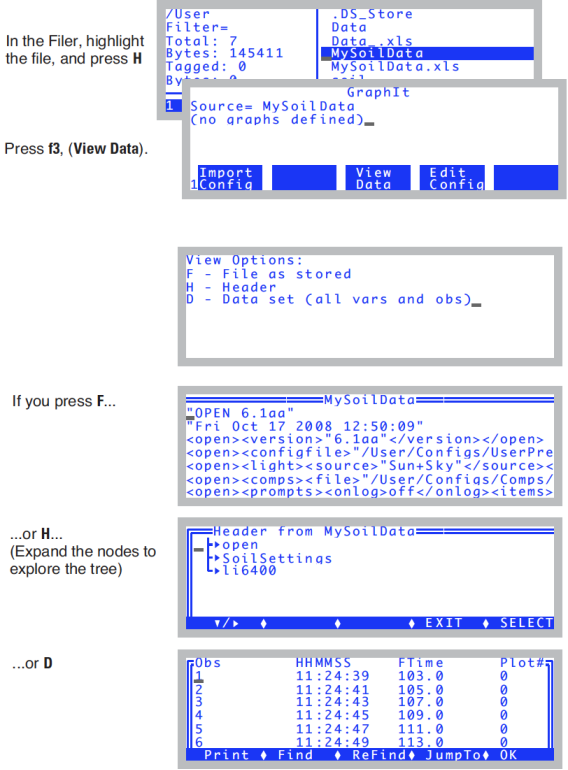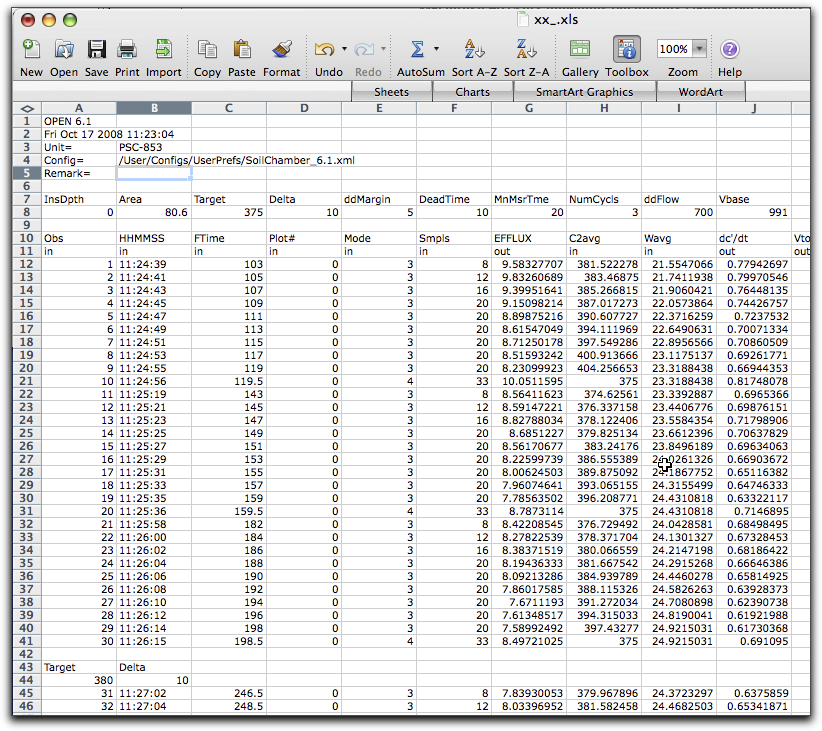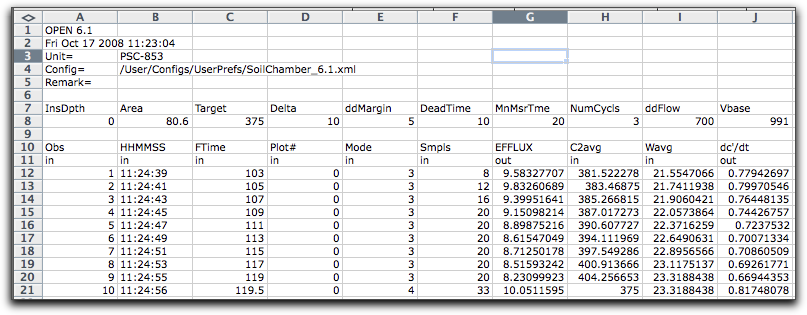Data Files
Text Version
A soil chamber data file is shown in Figure 28‑33.

The header of the file contains all the configuration and calibration settings, and also the <SoilSettings> data. If you examine a text file from the console of the LI-6400 using GraphIt, the header information is easy to navigate (Figure 28‑34).

Excel Version
The Excel version of a soil data file is shown in Figure 28‑35. These files have the equations built in. For example, if you wish to change insertion depth after the fact, just edit cell A8, and all the volumes and flux values will be updated accordingly.

Making Sense of Smpls
Let’s focus on the first cycle in the data file shown on the Excel sheet example (Figure 28‑36). The first nine observations are mode=3, which means they are taken as the CO2 is rising. Notice the Smpls column, which is the number of samples (Smpls). It contains 8, 12, 16, 20, 20, etc. Then, for the mode=4 observation (final flux value), it is 33.

The LI-6400 makes a new set of readings two times per second. When it starts recording data (mode=3), it begins the 10-second running stats. It will log a mode 3 observation whenever (a) it has at least eight samples in its running stats buffer, and (b) it has been at least 2 seconds since the last logged reading. Thus, the first four mode 3 observations have 8, 12, 16, and 20 samples. It stays at 20 after that due to the buffer size: twice per second a new sample pushes the oldest one out.
The number of observations of dc’/dt and C2avg that go into the final regression is given by the Smpls column in the mode=4 record (line 21). Two observations are added each second, once the minimum (8) samples have been recorded. So, we would appear to have gotten one for the first observation (line 12), and four more for each of the next eight observations (lines 13 through 20), for a total of 33.
